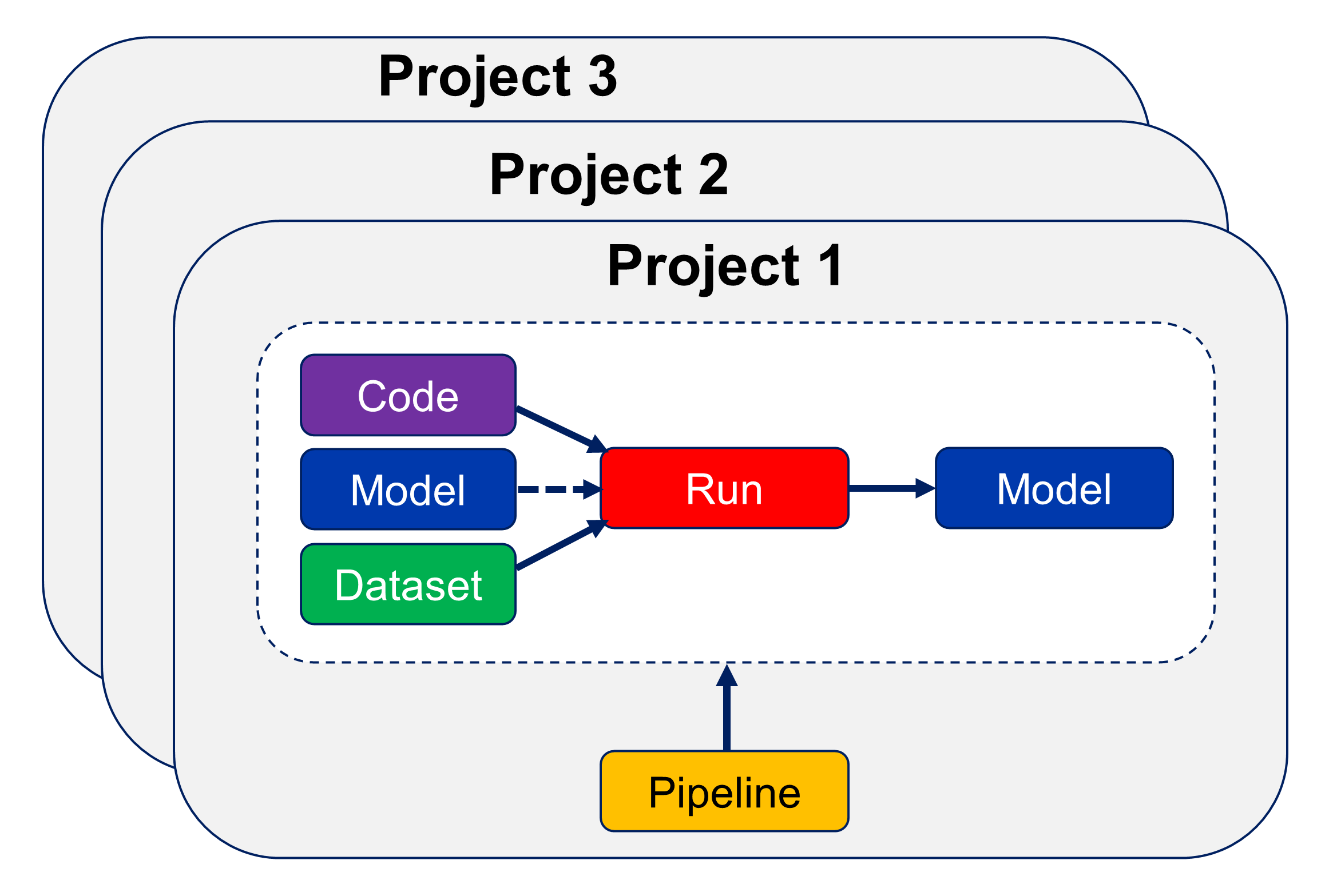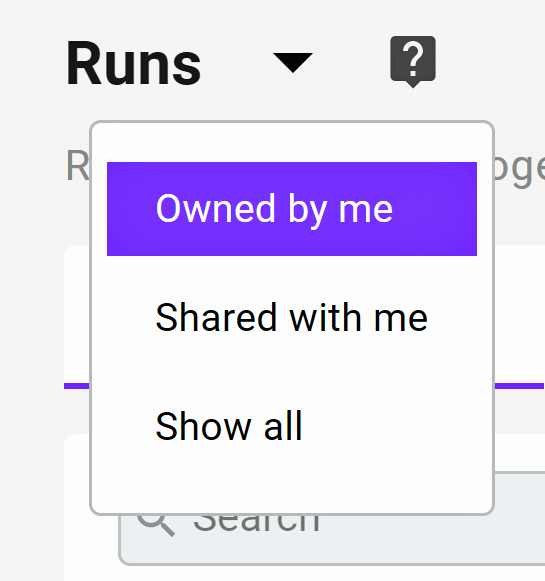Using DKube¶
This section provides an overview of DKube, and allows you to get started immediately.
DKube Roles & Workflow¶
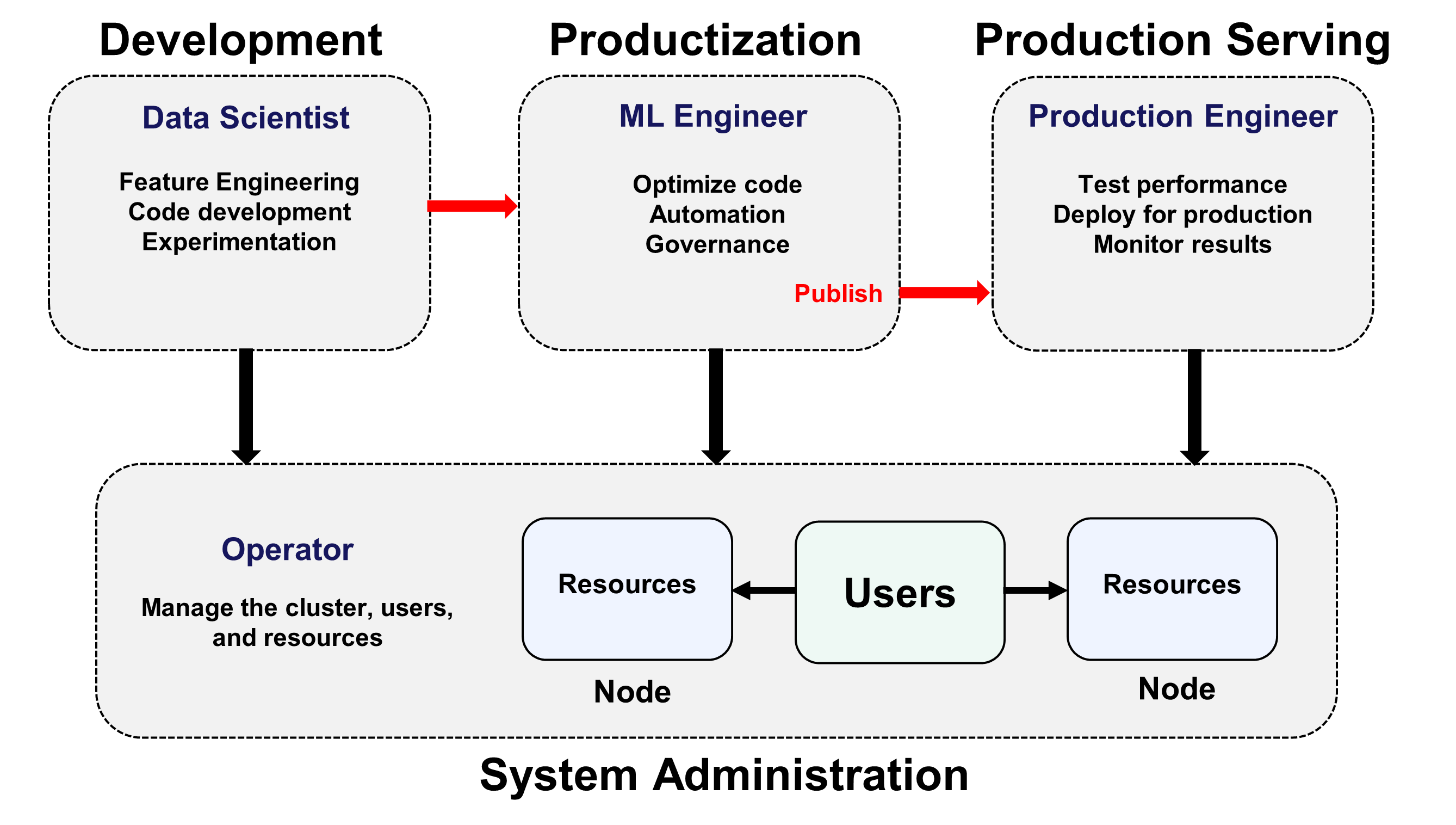
DKube is partitioned into 2 major screen views: Operator & Data Science. The workflow for each type is described in this section.
| Role | Screen View | Function |
|---|---|---|
| Operator (OP) | Operator | Manage the cluster, users, and resources |
| Data Scientist (DS) & ML Engineer (ML) | Data Science | Create and optimize models based on specific goals and metrics |
| Production Engineer (PE) | Deploy and monitor models for live inference serving |
Each role has access to different screens, menus, and capabilities, based on the expected workflow described at MLOps Concepts
The following are the rules for access and capability based on the role:
| Role | Capability |
|---|---|
| Operator (OP) | Full access to every screen, menu, and capability |
| Data Scientist (DS) | Can develop models, but cannot publish them or view the Model Catalog |
| ML Engineer (ML) | Same capabilities as DS, but can publish models for possible deployment |
| Production Engineer (PE) | Cannot develop or modify models, but can test and deploy them |
Roles can be modified after onboarding by the Operator, explained at Add (On-Board) User
Note
A user can have multiple roles. In this case, the access to the screens and capabilities are a superset of the roles assigned.
The screen view (Operator or Data Science) is selected at the top right-hand side of the screen. Once selected, the screens toggle between the views. The details of the screens are provided in the following sections.

First Time Users¶
It is highly recommended that you start your DKube experience with the guided example at Data Science Tutorial
This steps you through the Data Science workflow using a simple example. You can also to through a guided tutorial from the Data Science screen on the screen.
Data Science Concepts¶
If you are responsible for development or production of models, you will only have access to the Data Science roles, menus, and screens.
A tutorial that takes you through your first usage is available at Data Science Tutorial
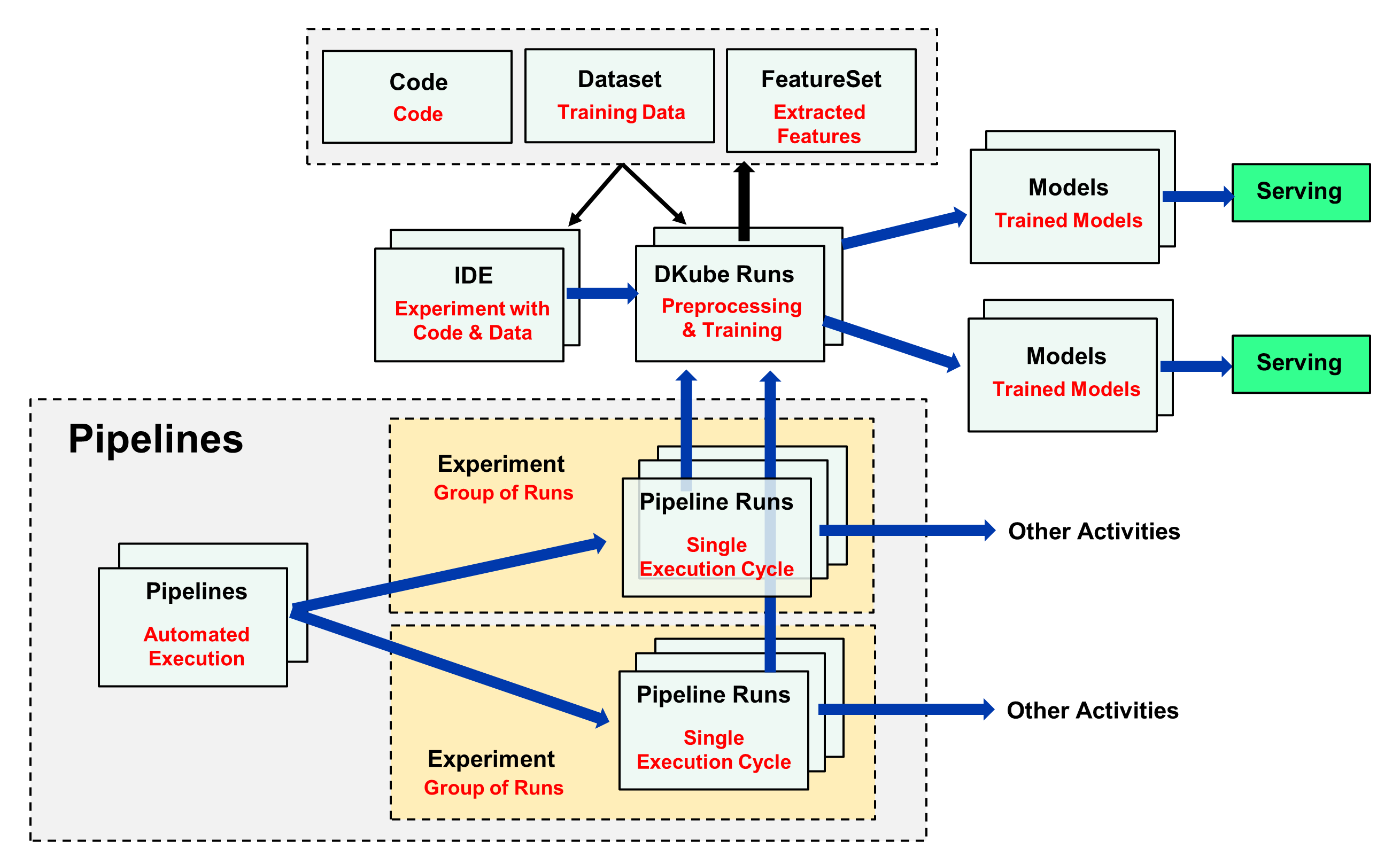
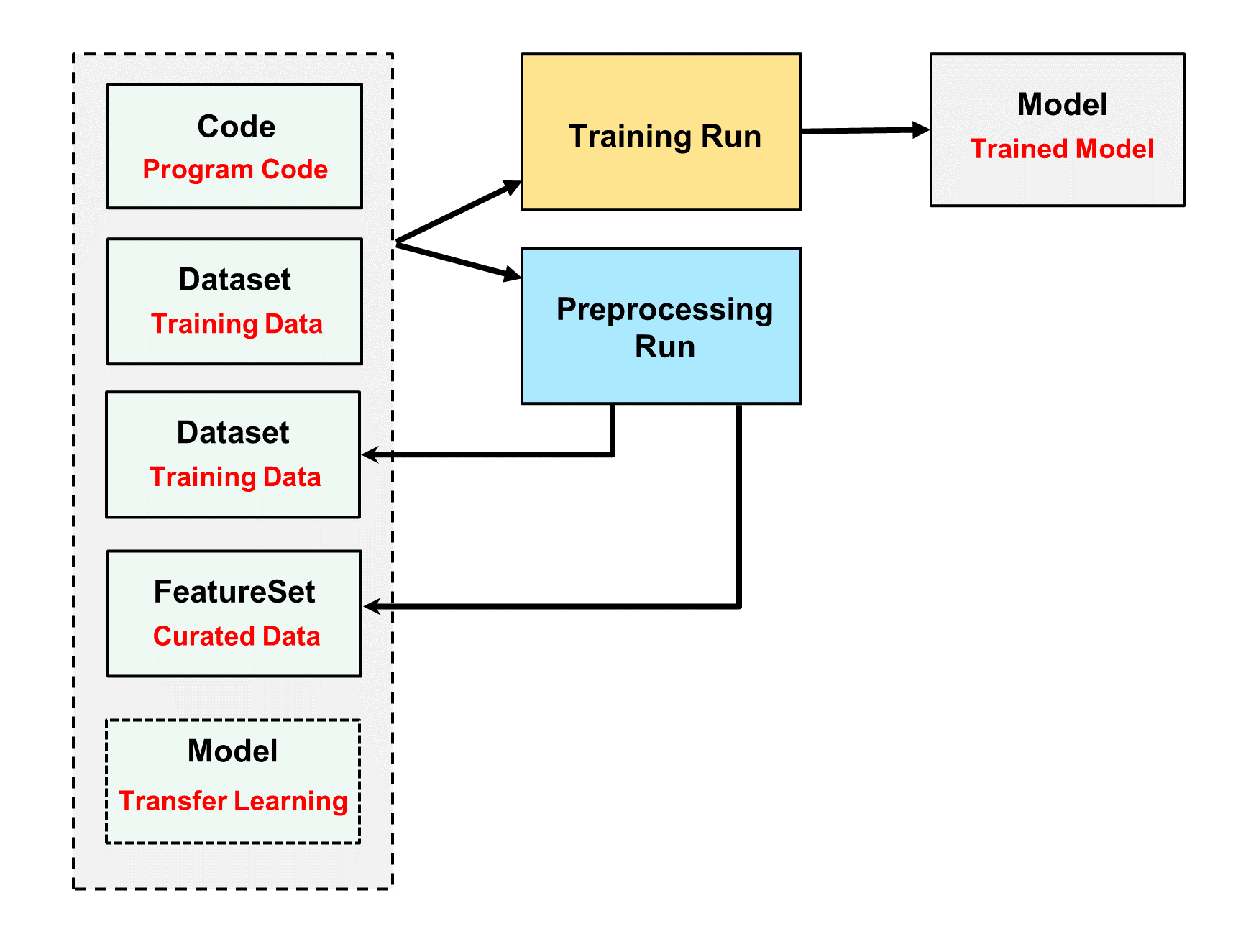
DKube Concepts¶
Term |
Definition |
|---|---|
Projects |
Grouping of resources based on a name |
Code |
Directory containing program code for IDEs and Runs |
Datasets |
Directory containing training data for IDEs and Runs |
FeatureSets |
Extracted Datasets |
IDEs |
Experiment with different code, datasets, and hyperparameters |
Runs |
Formal execution of code |
Models |
Trained models, ready for deployment or transfer learning |
Pipeline Concepts¶
Concept |
Definition |
|---|---|
Pipeline |
Kubeflow Pipelines - Portable, visual approach to automated deep learning |
Experiments |
Aggregation of runs |
Runs |
Single cycle through a pipeline |
Note
The concepts of Pipelines are explained in section Kubeflow Pipelines
Projects¶
Projects allow the user to group resources into categories, and view them together. When a Project is selected, only the resources such as Code, Datasets, Models, Runs, etc for that Project will be shown. This is described in more detail at Projects
Projects & Groups¶
A Project is associated with a specific Group when it is created (Groups are described at Operation of Groups ). The Project, and all of its associated resources (Code, Datasets, Runs, etc) are all shared with other Users in the same Group.
Leaderboard¶
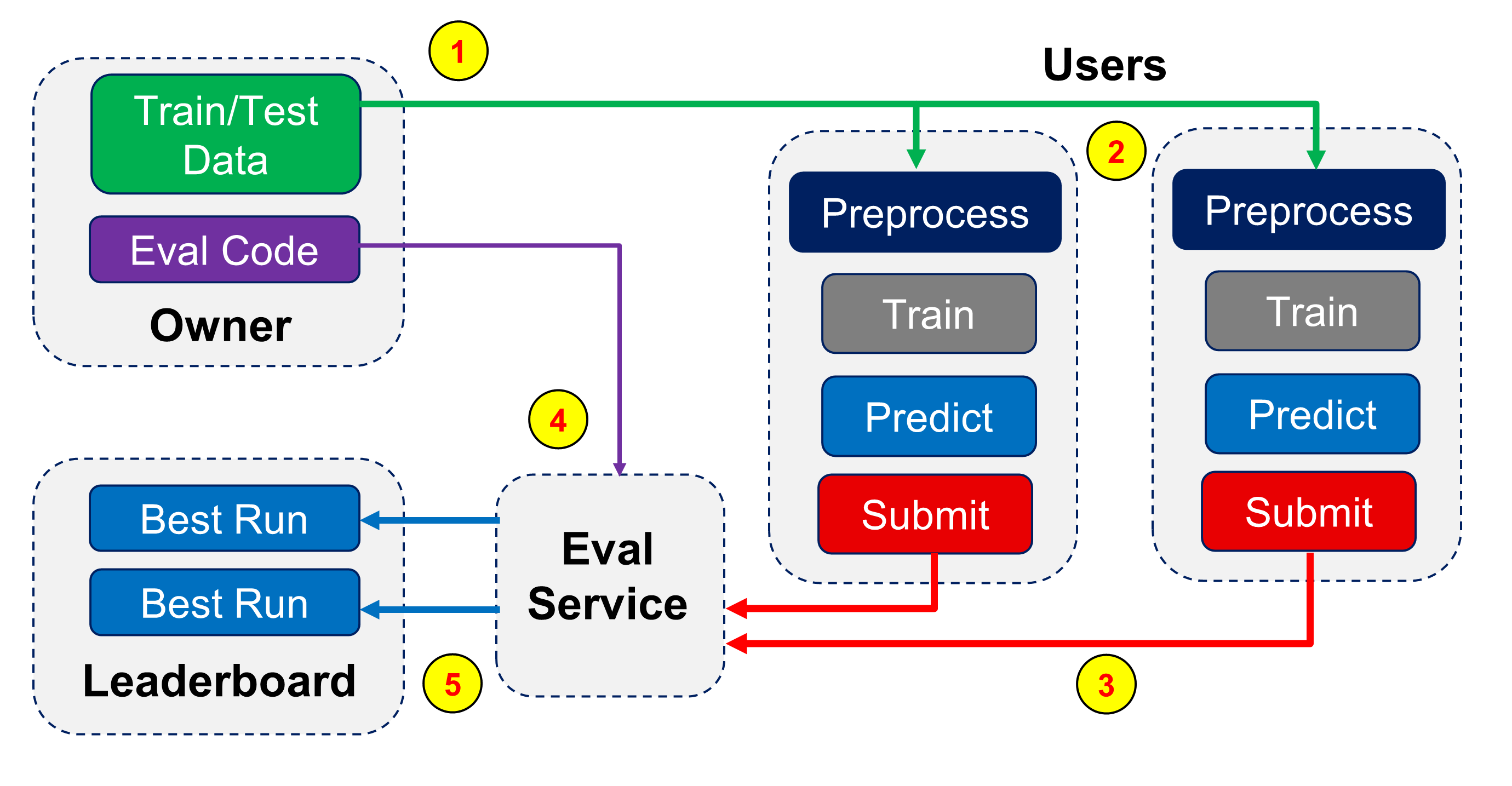
Projects also allow different users to submit results to a leaderboard. The owner sets up the configuration and evaluation criteria for the Project, and the best results from each participating user is shown in a table. This is described in more detail at Leaderboard
FeatureSets¶
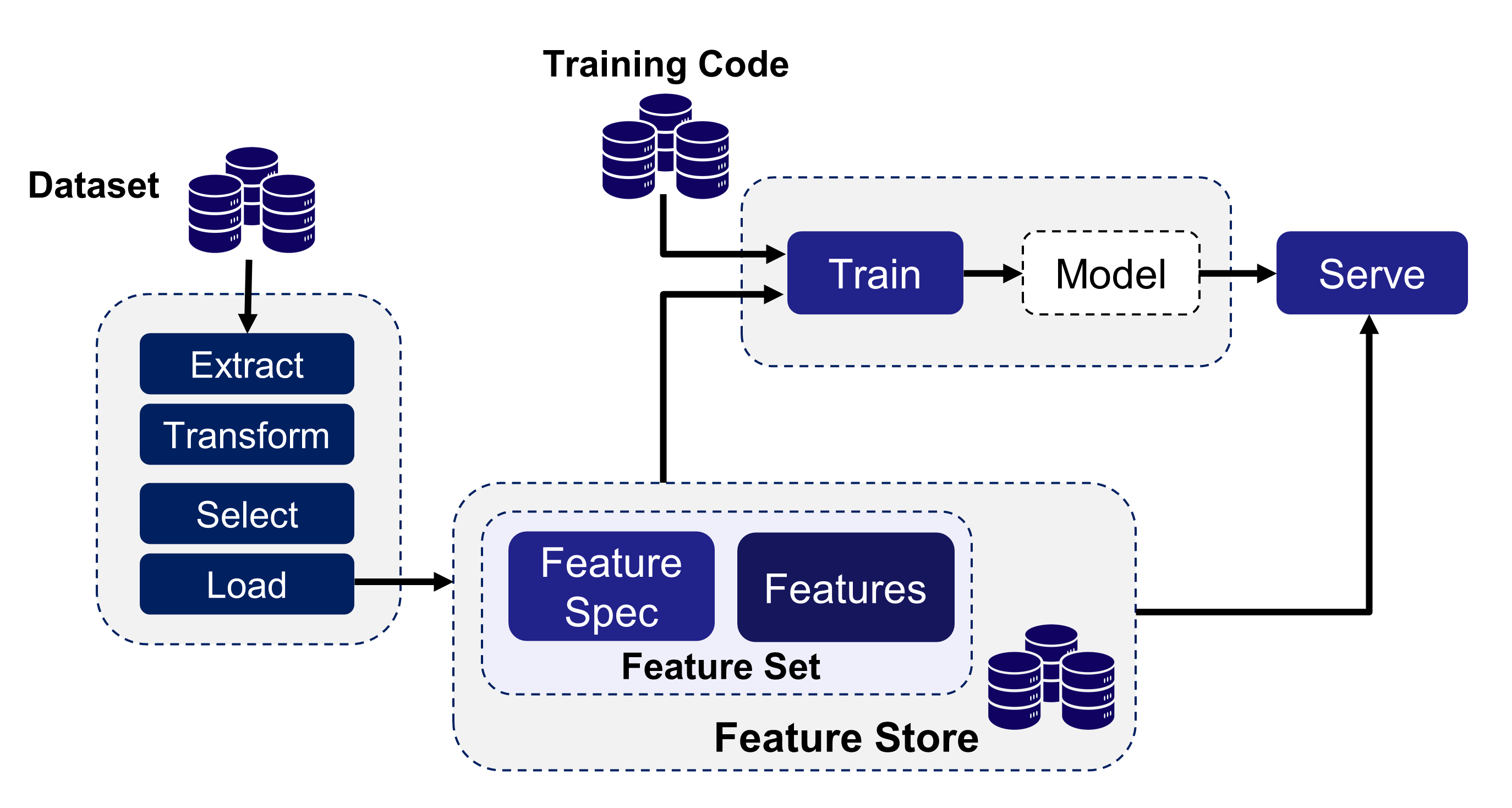
The DKube FeatureSets capability supports feature engineering within the data science workflow. Features are extracted from raw data to improve the performance of the prediction. FeatureSets save the curated data for use in training. This is described in more detail at FeatureSets
Delete and Archive¶
Resources within DKube (Repos, Runs, Models, etc) can be removed from the main list in 2 different ways.
Archive
Delete
Note
Resources must not be running in order to be archived or deleted
Archive¶
Archiving an resource places it into a special area without removing any of the data or metadata. It can be viewed by selecting the “Archived” menu item on the list screen.


Archived resources:
Are fully functional, and can be cloned, compared, published, etc, and they will show up in lineage and usage diagrams
Can be restored to the main area
Will be part of a DKube backup
Can be deleted, and will then be permanently removed from the DKube database
Delete¶
Deleting an resource removes it from the DKube storage.
Important
Deleting an resource permanently removes it from the DKube storage, and is non-recoverable

Run Scheduling¶
When a Run is submitted (see Runs ), DKube will determine whether there are enough available GPUs in the Pool associated with the shared Group. If there are enough GPUs, the Run will be scheduled immediately.
If there are not currently enough GPUs available in the Pool, the Run will be queued waiting for enough GPUs to become available. As the currently executing Runs are completed, their GPUs are released back into the Pool, and as soon as there are sufficient GPUs the queued Run will start.
It is possible to instruct the scheduler to initiate a Run immediately, without regard to how many GPUs are available. This directive is provided by the user in the GPUs section when submitting the Run.
Status Field of IDEs & Runs¶
The status field provides an indication of how the IDE or Run is progressing. The meaning of each status is provided here.
| Status | Description |
|---|---|
| Queued | Released from queue; waiting for GPUs |
| Starting | Resources available; Run is starting |
| Running | Run is active |
| Training | Run is executing |
| Complete | Run is complete; resources released |
| Stopping | Run in process of stopping |
| Stopped | Run stopped; resources released |
| Error | Run failure |
MLOps Concepts¶

DKube supports a full MLOps workflow. Although the application is very flexible and can accommodate different workflows, the expected MLOps workflow is:
Code development and experimentation are performed by a Data Scientist. Many Models will be generated as the Data Scientist does basic development. The Model that is best suited to solving the problem is then released to the ML Engineer.
The ML Engineer takes that Model and prepares it for production. The ML Engineer will also be generating many Models during the optimization and productization phase of development. The resulting optimized Model is then Published to identify that it is ready for the Production Engineer to review and deploy.
The Production Engineer does testing on the published model that is in the Model Catalog, and when satisfied that it is better than the current version, Deploys the Model for local or live inference.
The release process provides the full context of the Model as described in Tracking and Lineage . This allows reproducibility, and lets the ML Eng start with the existing Model and create more runs with different datasets, hyperparameters, and environments.
The details of this workflow are provided in the section Models
Note
Roles can be combined in any way, so that a small organization can assign a user to be both a Data Scientist and an ML Eng, or even all 3 roles. More formal organizations can split them up to provide structure. This assignment is done by the Operator.
Model Stages¶
Trained Models go through a series of stages before being deployed for inference serving. Once served, they are run on the server in several different ways, depending upon the role and goals. In each case, once served, the model APIs are exposed so that an inference client can be used to manage the inference.
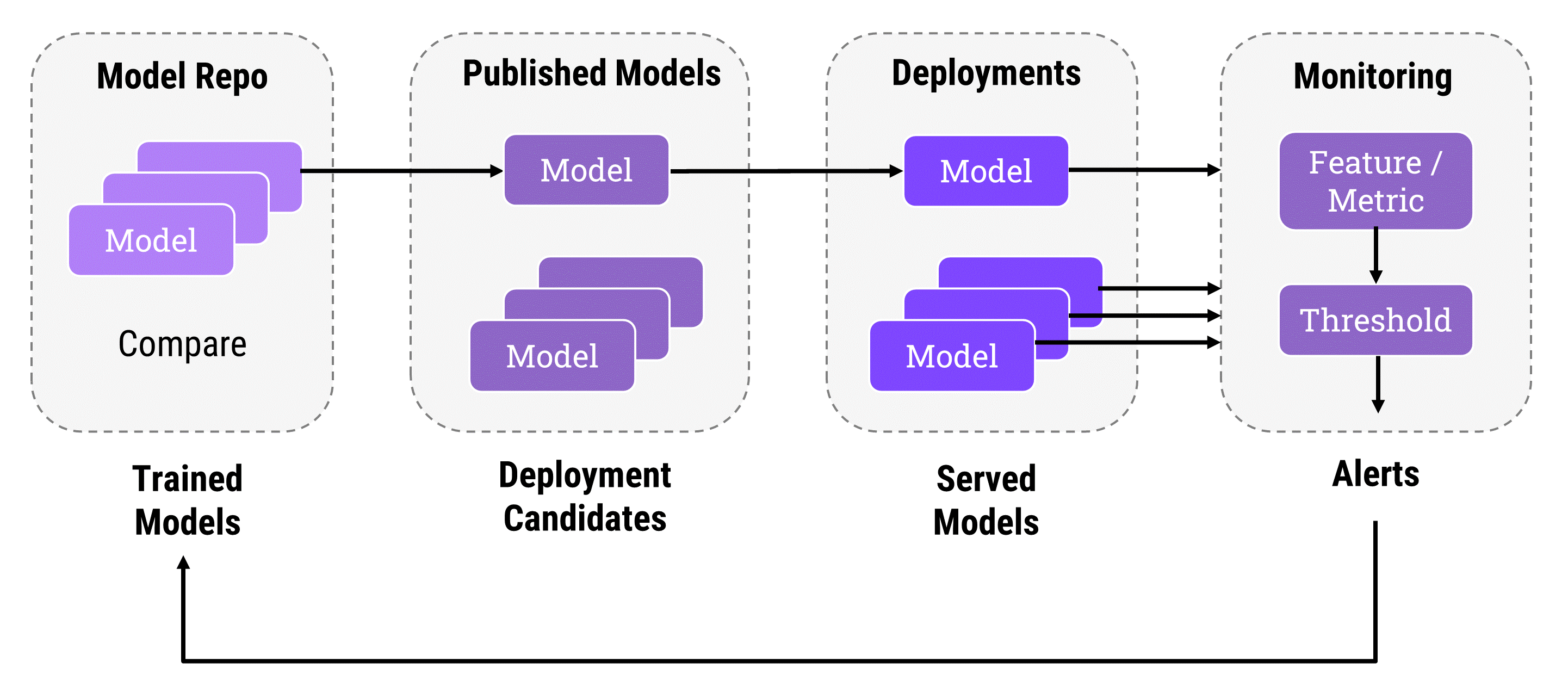
The Data Scientist and ML Engineer are responsible for developing and optimizing the models. Many models are trained before finding the few that best address the project goals. The models that are believed to best achieve those goals are Published and identified within the Model Repo that they are ready for possible deployment.
The Production Engineer is responsible for testing and validating the published models, then deploying the best versions for live inference.
The deployed Models are continuously monitored to ensure that they continue to achieve the business goals. If they no longer provide the required results, they are retrained by the Data Science teams and re-deployed.
Remote Model Deployment
Models that have been deployed on remote clusters can also be imported and monitored, as expained at Model Monitoring
Model Serving Transformer¶
Model serving can optionally include a Transformer, which provides preprocessing and postprocessing to the inference serving.
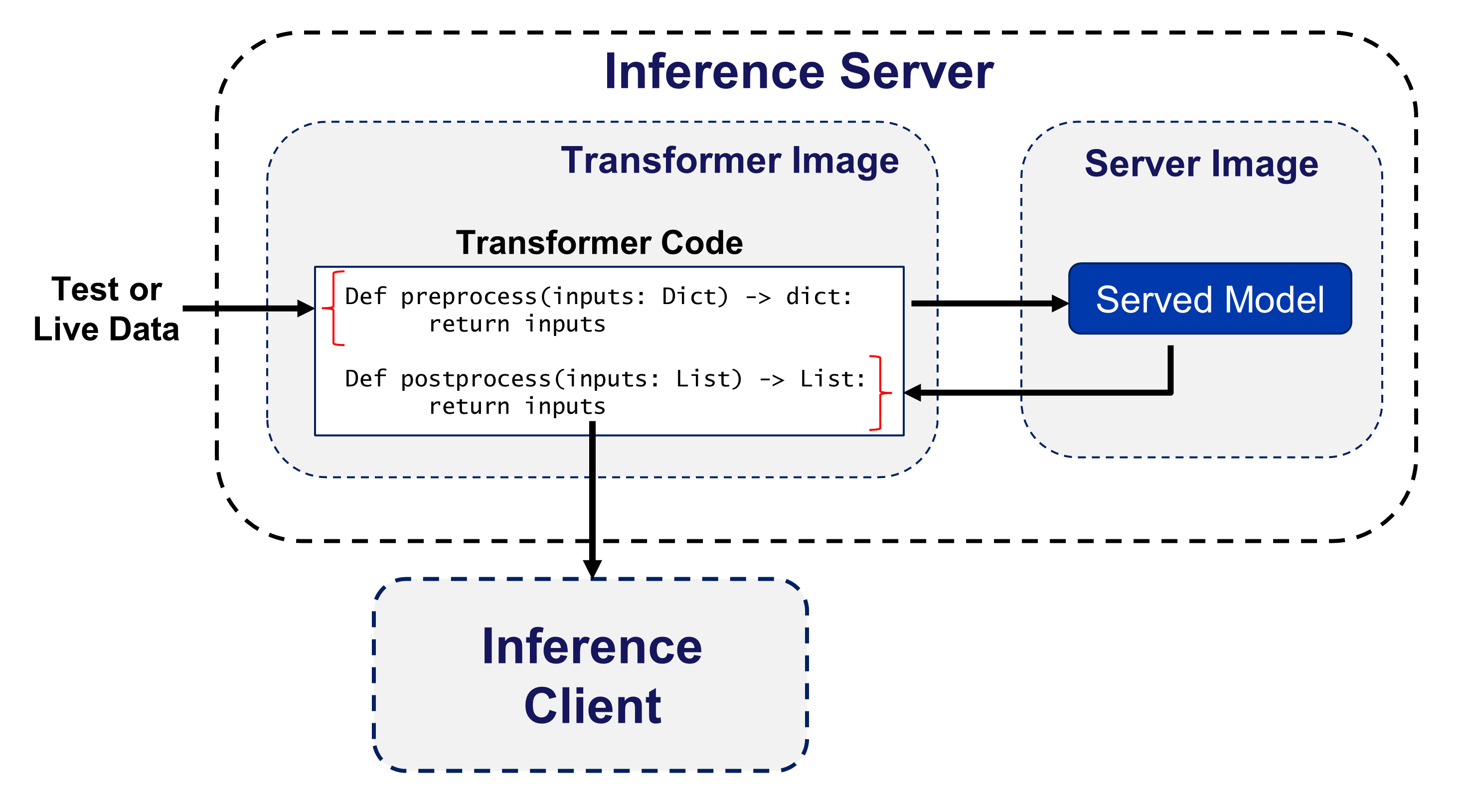
The test or live data is preprocessed by the preprocess() function of the Transformer code
The preprocessed data is executed on the served Model
The output of the Model is postprocessed by the postprocess() function of the Transformer code
The output of the postprocessing is sent to the inference client
Comparing Models¶
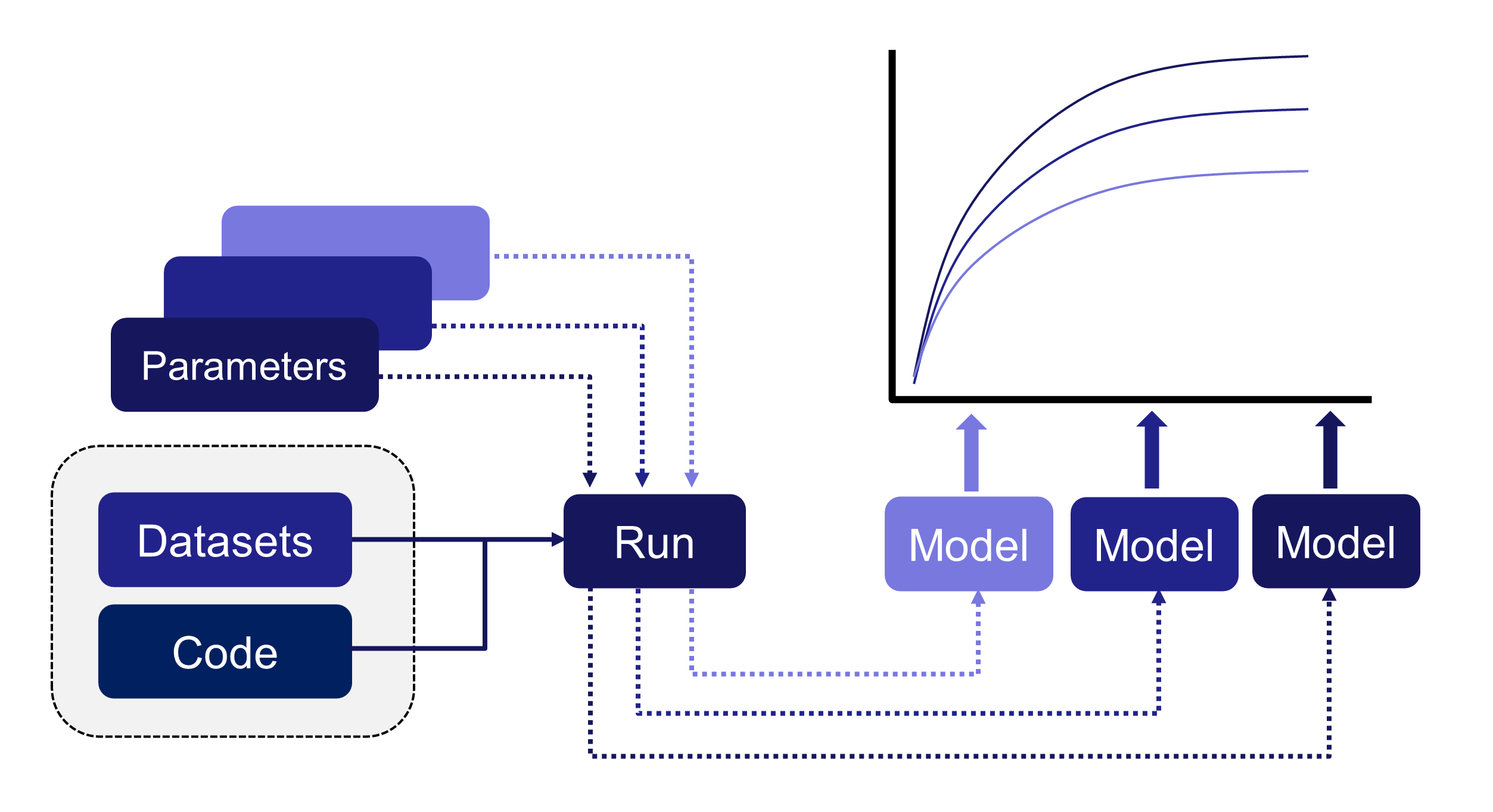
As part of the standard model delivery workflow, Data Scientists and ML Engineers need to be able to compare several models to understand how the key metrics trend. This is described in the section Compare Models
Tracking and Lineage¶
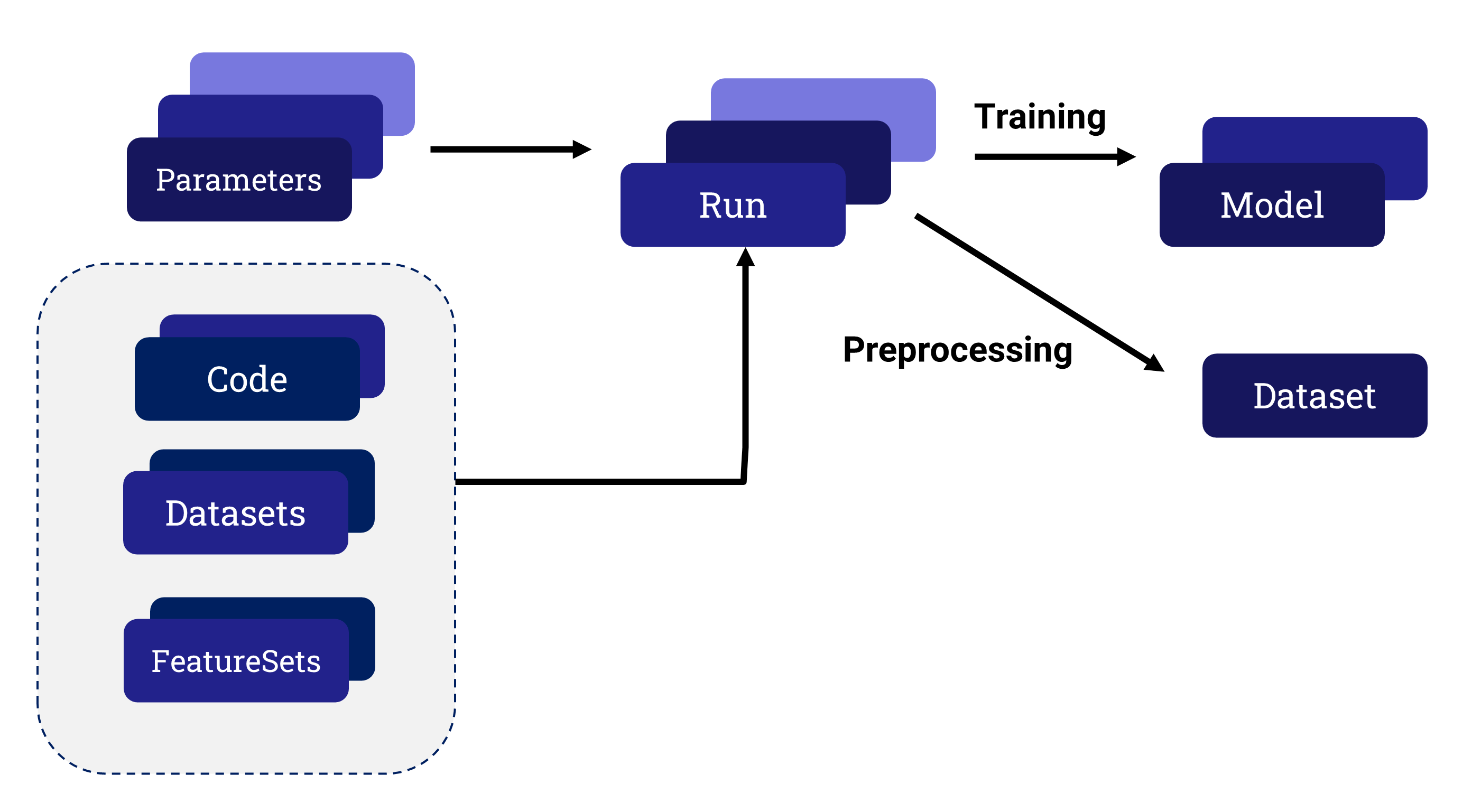
When working with large numbers of complex models, it is important to be able to understand how different inputs lead to corresponding outputs. This is always valuable, since the user might want to go back to a previous Run and either reproduce it or make modifications from that base. And in certain markets it is mandatory for regulatory or governance reasons.
Run, Model, and Dataset Lineage¶
DKube tracks the entire path for every Run and Model, and for each Dataset that is created from a Preprocessing Run. It is saved for later viewing or usage. This is called Lineage. Lineage is available from the detailed screens for Runs, Models, and Datasets. Run lineage is described in the section Metrics
Dataset Usage¶
DKube keeps track of where each version of each Dataset is used, and shows them in the detailed screens for the Dataset version. This can be used to determine if the right distribution of Datasets is being implemented.
Versioning¶
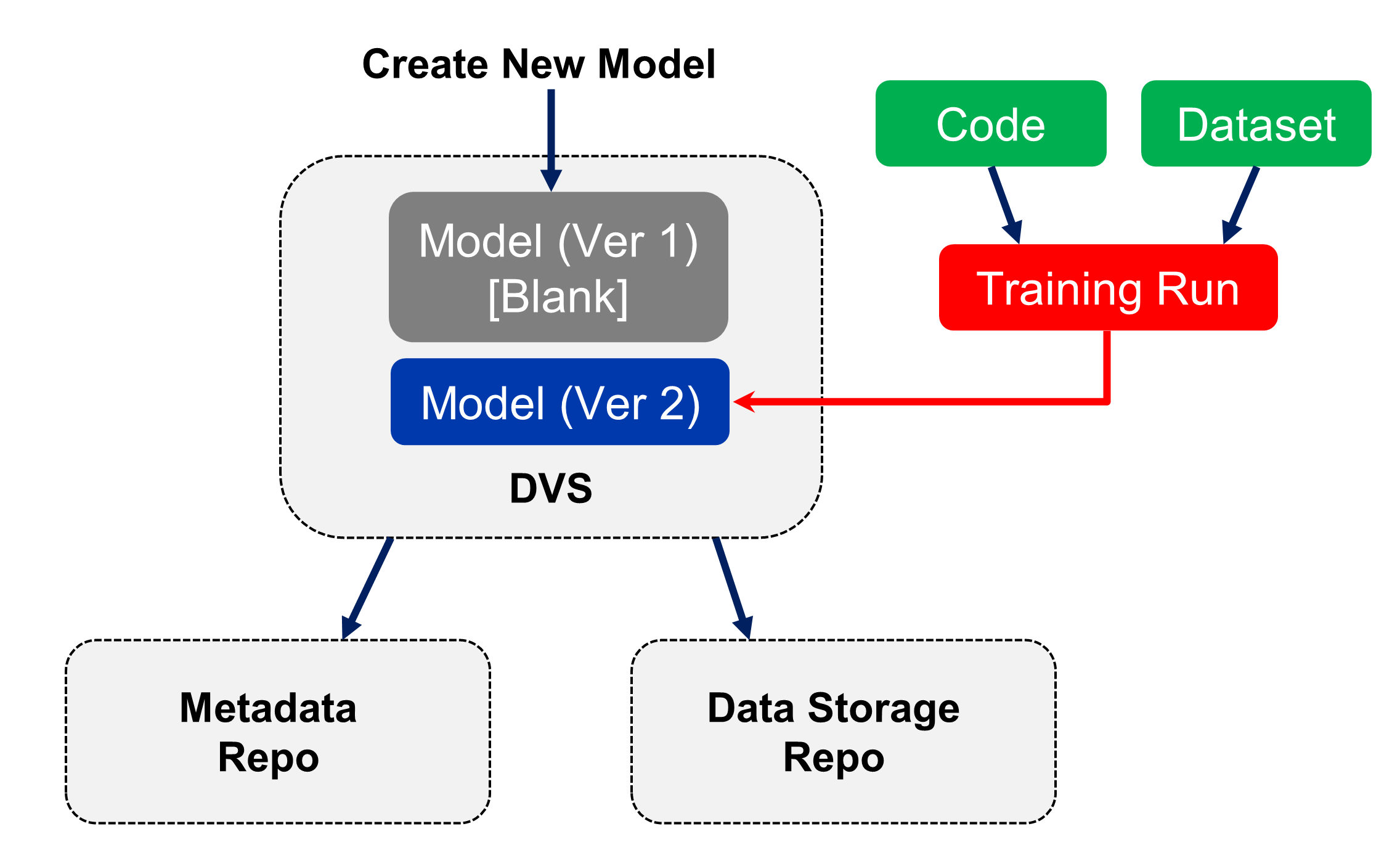
Datasets and Models are provided version control within DKube. The version control is part of the workflow and UI.
In order to set up the version control system within DKube, the versioned repository must first be created. This is explained DVS
The metadata information (including the version information) and the data storage repo are set up. The location for the data is specified, and the repo is given a name. This will create version 1 of the resource (Dataset or Model).
The DVS repo name is used when creating a Dataset or Model, as explained in section Repos
When a Run in executed:
A new version of a Model is created by a Training Run
A new version of a Dataset is created by a Preprocessing Run
The version system will automatically create a new version of the Model or Dataset, incrementing the version number after each successful Run.
The available versions of the Model or Dataset are available by selecting the detailed screen for that resource. The lineage and usage screens will identify what version of the Model or Dataset are part of the Run.
Container Images¶
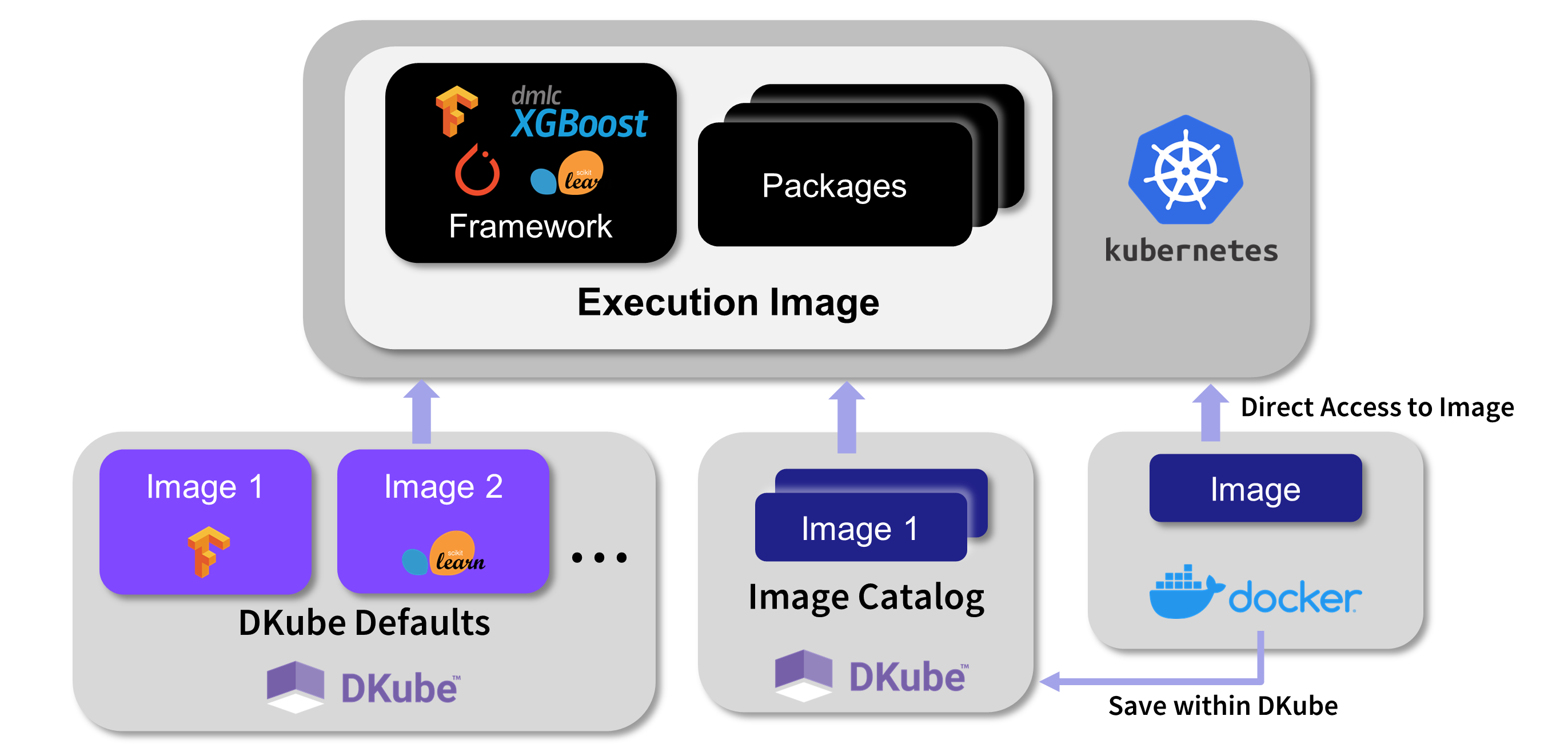
DKube Jobs run within container images. The image is selected when the Job is created. The image can be from several sources:
DKube provides standard images based on the framework, version, and environment
An image can be created when the Job is executed based on the code repo Build From Code Repo
A user-generated catalog of pre-built images can be used for the Job Images
Building custom images is explained at Custom Container Images
Hyperparameter Optimization¶
DKube implements Katib-based hyperparameter optimization. This enables automated tuning of hyperparameters for a Run, based upon target objectives.
This is described in more detail at Katib Introduction
Katib Within DKube¶
The section Hyperparameter Optimization provides the details on how to use this feature within DKube.
Kubeflow Pipelines¶
Support for Kubeflow Pipelines has been integrated into DKube. Pipelines facilitate portable, automated, structured machine learning workflows based on Docker containers.
The Kubeflow Pipelines platform consists of:
A user interface (UI) for managing and tracking experiments and runs
An engine for scheduling multi-step machine learning workflows
An SDK for defining and manipulating pipelines and components
Notebooks for interacting with the system using the SDK
An overall description of Kubeflow Pipelines is provided below. The reference documentation is available at Pipelines Reference
Pipeline Definition¶
A pipeline is a description of a machine learning workflow, including all of the components in the workflow and how they combine in the form of a graph. The pipeline includes the definition of the inputs (parameters) required to run the pipeline and the inputs and outputs of each component.
After developing your pipeline, you can upload and share it through the Kubeflow Pipelines UI.
The following provides a summary of the Pipelines terminology.
Term |
Definition |
|---|---|
Pipeline |
Graphical description of the workflow |
Component |
Self-contained set of code that performs one step in the workflow |
Graph |
Pictorial representation of the run-time execution |
Experiment |
Aggregation of Runs, used to try different configurations of your pipeline |
Run |
Single execution of a pipeline |
Recurring Run |
Repeatable run of a pipeline |
Run Trigger |
Flag that tells the system when a recurring run spawns a new run |
Step |
Execution of a single component in the pipeline |
Output Artifact |
Output emitted by a pipeline component |
Pipeline Component¶
A pipeline component is a self-contained set of user code, packaged as a Docker image, that performs one step in the pipeline. For example, a component can be responsible for data preprocessing, data transformation, model training, etc.
The component contains:
Term |
Definition |
|---|---|
Client Code |
The code that talks to endpoints to submit Runs |
Runtime Code |
The code that does the actual Run and usually runs in the cluster |
A component specification is in YAML format, and describes the component for the Kubeflow Pipelines system. A component definition has the following parts:
Term |
Definition |
|---|---|
Metadata |
Name, description, etc. |
Interface |
Input/output specifications (type, default values, etc) |
Implementation |
A specification of how to run the component given a set of argument values for the component’s inputs. The implementation section also describes how to get the output values from the component once the component has finished running. |
You must package your component as a Docker image. Components represent a specific program or entry point inside a container.
Each component in a pipeline executes independently. The components do not run in the same process and cannot directly share in-memory data. You must serialize (to strings or files) all the data pieces that you pass between the components so that the data can travel over the distributed network. You must then deserialize the data for use in the downstream component.
Kubeflow Pipelines Within DKube¶
The section Kubeflow Pipelines provides the details on how this capability is implemented in DKube. One Convergence provides templates and examples for pipeline creation described at Kubeflow Pipelines Template
Model Monitoring¶

Over time, models can degrade, providing inference results that no longer achieve your business goals. DKube integrates model monitoring into the overall workflow. This allows the production engineer to monitor the serving results, and take action if the results are no longer within acceptable tolerances.
Alerts can be set up based on goals and tolerances
A Dashboard provides a snapshot of all monitored models
Problems can be viewed in a set of hierarchical graphs
The problem, and its root cause, can be determined
Retraining and redeployment can be performed
This capability will be available based on your DKube license. It is described in more detail at DKube Monitor User Guide
Multicluster Concepts¶
DKube supports operation across more than one cluster. This is available in the following ways:
Jobs can be submitted to the same or a different cluster
Development, deployment, and monitoring can be on the same or different clusters
Multicluster Job Execution¶
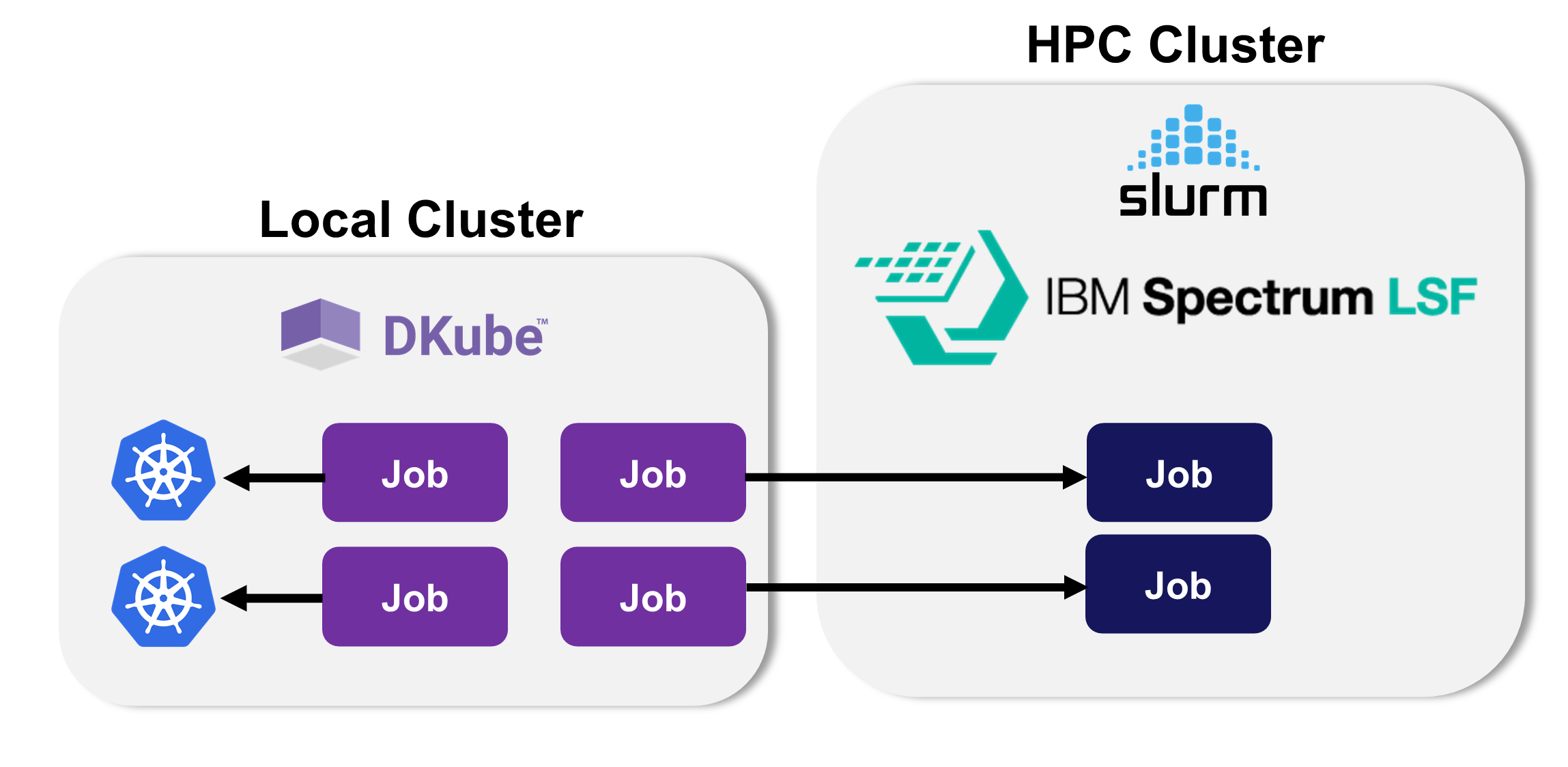
DKube provides the ability to execute Jobs on the local Kubernetes cluster, or it can send them to another cluster for execution. A remote cluster link is first added to the DKube cluster database. Then, a Job can be submitted to the remote cluster, with DKube taking care of any necessary translation through a plug-in.
The Job metadata is kept on the local cluster so that the MLOps workflow - tracking, lineage, etc - are all available from the remote execution. This is described in more detail at Multicluster Operation
The basic flow of adding and using an external cluster are:
Set up the external cluster as described at Multicluster Management
Log into the cluster, if required, as described at Multicluster Operation
Submit the job to the remote cluster as described at Configuration Submission Screen
Workflow Across Multiple Clusters¶

DKube allows your workflow to be performed on a single cluster, or distributed across multiple clusters. Any combination of clusters is possible.
Development can be performed on one cluster, then a Model can be deployed to the same or a different cluster, described at Deploy on a Different Cluster
A deployed Model can be monitored on the same cluster as the deployment, or on a different cluster, described at Import Deployment
Deploying on a Different Cluster¶

Deploying a model on a different cluster than the development cluster is performed by:
Building a deployment image on the Development Cluster and storing it in an external repo
Importing the deployment from the external repo on the Serving Cluster
This is described in more detail at Deploy on a Different Cluster
Operator Concepts¶
The Operator manages the cluster, users, and resources. By default, DKube enables operation without needing to do setup from the Operator. The Operator User is on-boarded and authenticated during the installation process.
Most users will not have Operator privileges.
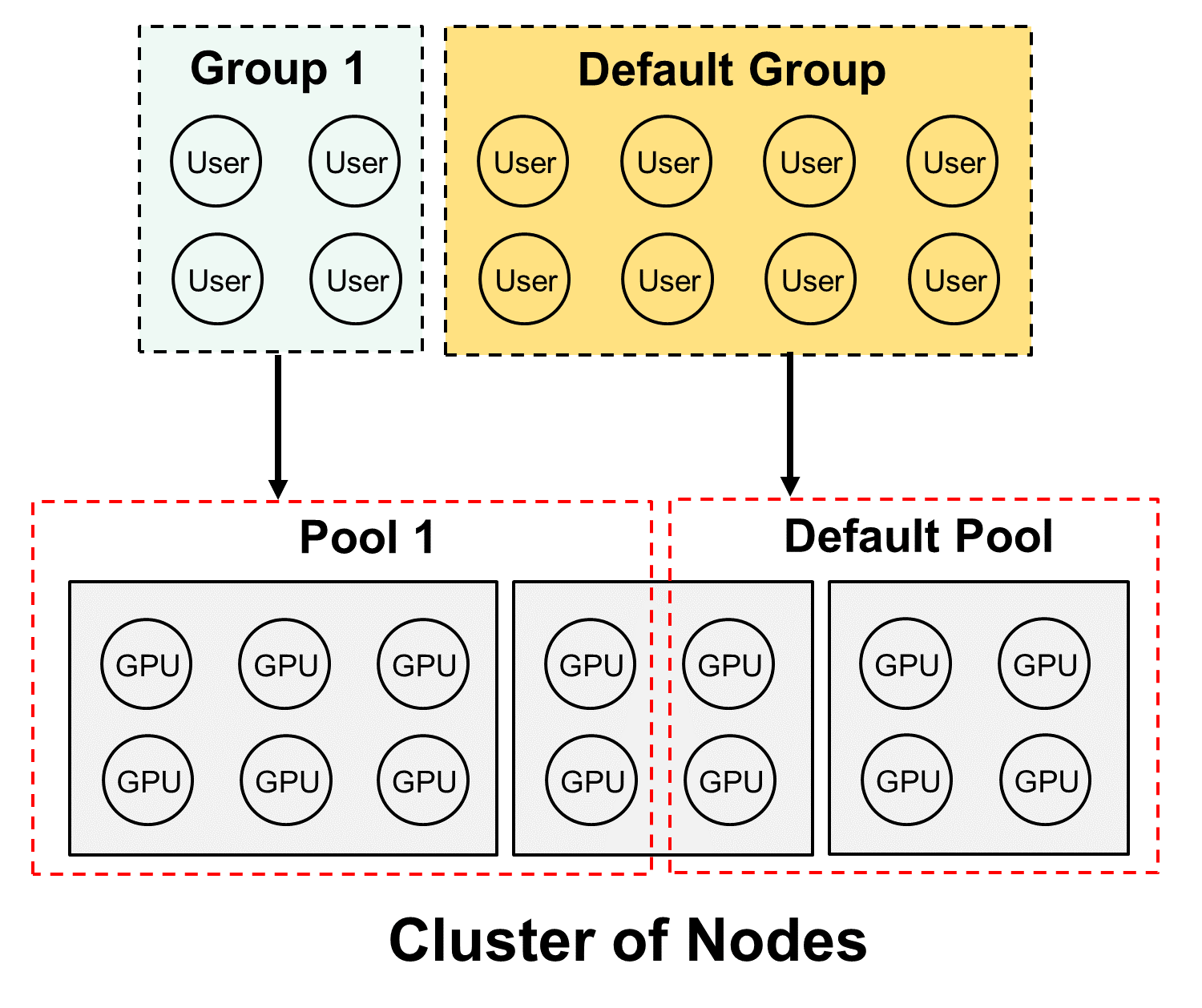
Concept |
Definition |
|---|---|
User |
Operator or Data Science Engineer |
Group |
Aggregation of Users that share data |
GPU |
GPU devices connected to the Node, on the same server, or on another server in the cluster |
Node |
Execution resource on a physical host or a VM |
Pool |
Aggregation of GPUs from anywhere in the cluster |
Operation of Groups¶
Groups of Users work together and share all of their inputs and outputs to enable collaboration. They can view each other’s code, datasets, models, runs, etc. In most cases one User in a Group can clone the work of another User and build on it. Only the Owner of the resource - the User who created it - can manage, delete, archive, etc.
Multi-Group Users¶
A User can be in more than one Group. Multi-Group Users can view all of the data in all of the Groups that they are a part of. When they create an resource or submit a job they need to identify which Group it should be a part of. This will determine which other Users can view the resource.
The process used to set up and use multi-group Users is:
Add multiple Groups to the User when on-boarding, as described at Add (On-Board) User
That User will be able to view the data from other Users in the same Groups
When multi-group Users create an resource (Code, Dataset, etc.) or submit a job, they must first decide which Group this will be part of so that:
The resources will be available to other Users in the same Groups(s)
The Job submission uses the GPU Pool associated with that Group
The Group that will be used for the creation or submission is identified by the associated Project
In order to change the Group for creation or submission, a different Project should be selected
Operation of Pools¶
Pools are collections of GPUs assigned to Groups. The GPUs in the Pool are shared by the Users in the Group.
A Pool can only contain one type of GPU; this includes any resources for that GPU, such as memory
The Users in a Group share the GPUs in the Pool
As GPUs are used by Runs or other resources, they reduce the number of GPUs available to other Users in the Group. Once the Run is complete (or stopped), the GPUs are made available for other Runs.
Clustered Pools¶
Pools behave differently depending upon whether the GPUs are spread across the cluster, or on a single node. If all of the GPUs in a Pool are on a single node, no special treatment is required to operate as described above.
If the GPUs in a pool are distributed across more than a single node, the Advanced option must be selected when submitting a Run. This process is described in the section Create Training Run
Default Pool and Group¶
DKube includes a Group and Pool with special properties, called the Default Group and Default Pool. They are both available when DKube is installed, and cannot be deleted. The Default Group and Pool allow Users to start their work as Data Scientists without needing to do a lot of setup.
The Default Pool contains all of the GPUs that have not been allocated to another Pool by the Operator. As the GPUs are discovered and automatically on-boarded, they are placed in the Default Pool.
As additional Pools are created, and GPUs are allocated to the new Pools, the number of GPUs in the Default Pool are reduced
As GPUs are removed from the other (non-Default) Pools, those GPUs are allocated back into the Default Pool
The total number of GPUs in all of the Pools will always equal the total number of GPUs across the cluster, since the Default Pool will always contain any GPU not allocated to any other Pool
The Default Group automatically gets the allocation of the Default Pool, and it contains all of the on-boarded Users who are allocated to the Default Group.
As new Users are on-boarded, they are assigned to the Default Group unless a different assignment is made during the on-boarding process
Users can be moved from the Default Group to another Group using the same steps as from any other Group
Initial Operator Workflow¶
At installation time, default Pools & Groups have been created, and the Operator is added to the Default Pool.
The Default Pool contains all of the resources
The Operator has been added to the Default Group
The Data Scientist can start without needing to do any resource configuration
If Pools and Groups are required in addition to the Default, the following steps can be followed:
Create Additional Pools Create Pool
Assign Devices to the Pools
Create Additional Groups Create Group
Assign a Pool to each new Group
Add (On-Board) Users Add (On-Board) User
Assign Users to one of the new Groups
New Users can still be assigned to the Default Group if desired
If the Operator is the only User, or if all of the Users - including other Data Scientists - are in the same Group, nothing else needs to be done from the Operator workflow to get started.
The Operator should select the Data Science dashboard
